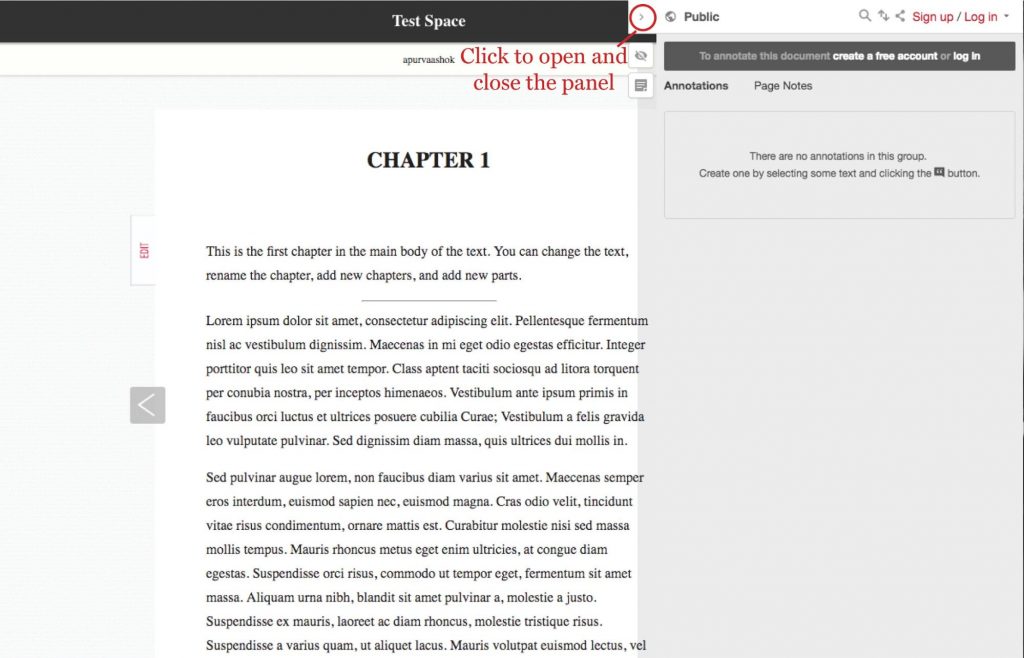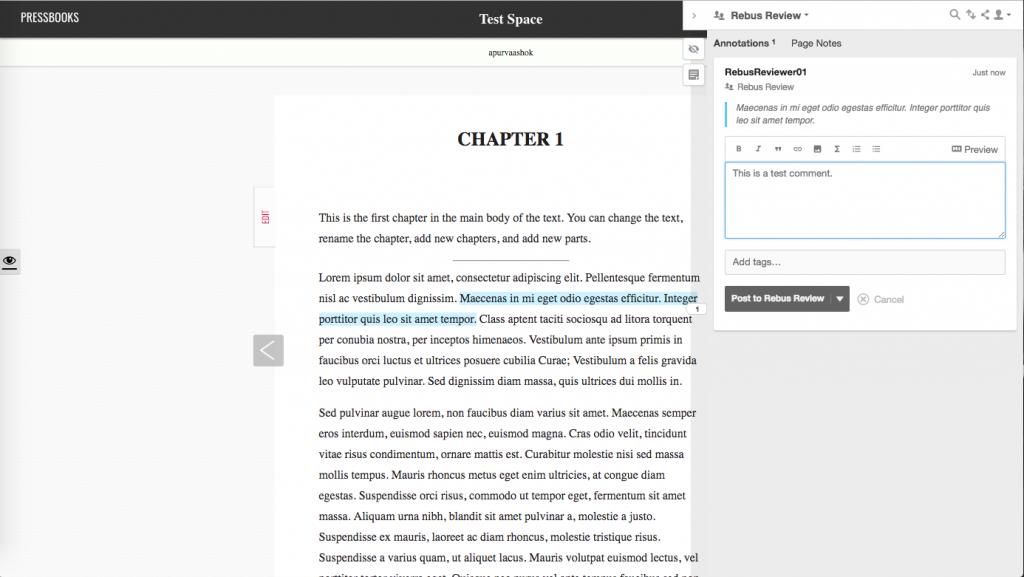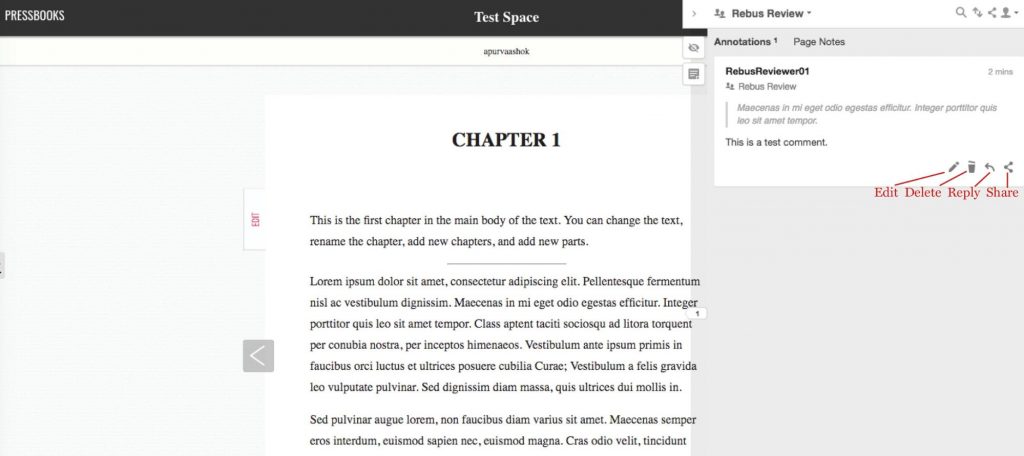5.3: Review Guide Template
Rebus Community Review Guide
Welcome to the guide for Rebus open textbook reviewers. This guide is meant to help you give great, useful feedback on the open textbooks we are helping to develop. You are welcome to print this Google doc, make a copy for yourself, or share with others.
Please read through sections below, and use this as a reference as you complete your review. If you have any questions, email the project lead.
Before We Begin
As we strive to work openly, all contributions made to this textbook will be licensed under a CC BY 4.0 International License. Your name will be mentioned in the published version of the book as reviewer.
No OER can serve all learners, so it is important to be aware of the context the book is meant to live in. Take a moment to read through the project summary to familiarise yourself with the book’s purpose and audience before beginning your review.
About This OER
Include a quick summary and description of your project and book here. You should also link to project info page, so interested readers can learn more.
Audience
Insert a few sentences about the OER’s intended audience here. For example: “This OER is meant for use in first-year introductory courses. The audience will primarily consist of undergraduates pursuing the major, however can also include some mixed-major undergraduates.” You can include as much detail as you think is necessary, such as technical requirements, reading levels, etc.
Core Components
If there were one single question your review should seek to answer, it should probably be:
“To what extent is the book successful in meeting the needs of its primary market?”
When reviewing drafts, also consider the following. (Note: the second item of each criterion asks the review to rate it on a scale of 1 to 5 (1 = very poor and 5 = excellent)):
- Comprehensiveness: The text covers all areas and ideas of the subject appropriately and provides an effective index and/or glossary. How do you rate the book’s overall comprehensiveness?
- Content Accuracy: Content is accurate, error-free and unbiased. Overall, how do you rate the accuracy of the content?
- Relevance Longevity: Content is up-to-date, but not in a way that will quickly make the text obsolete within a short period of time. The text is written and/or arranged in such a way that necessary updates will be relatively easy and straightforward to implement. Overall, how do you rate the relevance/longevity of the resource?
- Clarity: The text is written in lucid, accessible prose, and provides adequate context for any jargon/technical terminology used. Overall, how do you rate the clarity of the book?
- Consistency: The text is internally consistent in terms of terminology and framework. How do you rate the overall consistency of the resource?
- Modularity: The text is easily and readily divisible into smaller reading sections that can be assigned at different points within the course (i.e., enormous blocks of text without subheadings should be avoided). The text should not be overly self-referential, and should be easily reorganized, and realigned with various subunits of a course without presenting much disruption to the reader. Overall, how do you rate the modularity of the text?
- Organization Structure Flow: The topics in the text are presented in a logical, clear fashion. Overall, how do you rate the organization/structure/flow of the text?
- Interface: The text is free of significant interface issues, including navigation problems, distortion of images/charts, and any other display features that may distract or confuse the reader. Overall, how do you rate the textbook’s interface?
- Grammatical Errors: The text contains no grammatical errors. How do you rate the grammar and spelling of the text?
- Diversity and Inclusion: The text reflects diversity and inclusion regarding culture, gender, ethnicity, national origin, age, disability, sexual orientation, education, religion. It does not include insensitive or offensive language in these areas. Overall, how do you rate the diversity and inclusion of the text?
This rubric was developed by BCcampus Open Education . This work is licensed under a Creative Commons Attribution 4.0 International license. It is a derivative of the Peer Review criteria used by Saylor Academy which is a derivative of the review rubric by College Open Textbooks (http://collegeopentextbooks.ning.com/page/review-2))
Feedback
Project Specific Questions
This is where you can add guiding questions for reviewers that are specific to your project. This helps to draw their attention to any areas you think need particular consideration, and helps ensure the feedback you receive is valuable.
For example, if the focus is on DEI improvements, you could ask questions like:
- Are Black, Indigenous, and People of Colour scholars, researchers, and contributors represented?
- Is content (both text and non-textual elements) diverse? Does it value differences and welcome diverse perspectives?
- Is there any evidence of unconscious bias within the resource? Look for words that carry unintended negative weight or form generalisations or stereotypes. You can also review the APA Bias-Free Language Guidelines for more recommendations.
- Have intersecting identities been considered in the resource? As Black poet, writer, and activist Audre Lorde (1982) said: “We do not live single-issue lives.”
- Many of you are already familiar with the term intersectionality. This is a term coined by Kimberlé Williams Crenshaw. Intersectionality asks us to recognize the complex ways in which multiple forms of discrimination (such as racism, sexism, ableism and classism) overlap, highlighting “the multiple avenues through which racial and gender oppression [are] experienced.” (Kimberlé Williams Crenshaw, 2015) Be sure to list some of the intentional strategies you have employed so reviewers can assess if this is done well.
- Are gender/sex/sexual orientation, racial, cultural, religious, age, disability, class, language and geographical diversities reflected in this resource?
Leaving Feedback (Google Doc)
Please leave feedback in the Google doc using either the Comments tool or by providing feedback with the Suggestions tool.
Commenting
Leave a comment in the document by selecting a portion of text, and clicking on the comment icon.
Alternatively, you can select the text, and choose Insert > Comment on the menu at the top of the page, or use the keyboard shortcut for your computer. You can select individual words or whole sentences, leaving feedback on specific parts of the document.
Once you enter your comment, be sure to click on “Comment” to save it. Once it is saved, it will appear next to the selected text. You can edit or delete a comment by clicking on the ellipsis in the top right corner of the comment.
Suggesting
You can also leave proposed edits in the document by switching to Suggesting mode in the upper right-hand part of the document.
Similar to track changes features of other word processing programs, the authors will see your proposed change and selectively roll or edit them in.
When in doubt, begin by leaving comments. Use the Suggesting mode as it is useful to you.
Leaving Feedback (Hypothes.is)
Please leave comments on the web version of the text using Hypothes.is, and/or provide a short memo summarising your feedback. This memo can be submitted to the project lead or review coordinator. Please also notify the lead and coordinator when you have finished making your comments in Hypothesis, if you choose to do so.
How to Use Hypothes.is
In-line Comments
- Open the chapter you are reviewing in your browser.
- Open the Hypothesis panel by clicking on the left arrow in the sidebar.

- Log in using the username and password provided by Rebus (if you have not been provided with these details please contact the project manager).

- By default, Hypothesis annotations are made to the Public group. For the purposes of peer review, a group called Rebus Review has been created. To make annotations to this group, click on the dropdown menu next to Public, and select Rebus Review. All of your annotations will now be made in this group, and will remain private.

- Select the text you would like to comment on or highlight.

- Click on Annotate to add a comment. You can type in your comment and click on “Post to Rebus Review” to post it in the group.

- You can edit, delete, reply to or share your comment once it has been posted by using the buttons on the bottom-right of the comment box.

Page Notes
- Log in to Hypothesis account using the account and password provided by Rebus, as described above, and switch to the Rebus Review group.
- By default, Hypothesis is set to display and enter annotations. To enter a longer memo-style note, or view other notes on a particular chapter, click on Page Notes from the top menu.

- Click on the page icon to write your own note. You will see a comment box pop-up, where you can type in your lengthier comments.

- Once you have finished typing, click on Post to Rebus Review to post your note to the group.

- You can edit, delete, reply to, or share page notes similar to annotations!

Compassionate Reviewing
Here you can add a few sentences about reviewer etiquette. The following is a short example, but could be expanded on, particularly if authors will see reviewer comments – you may want to mention this specifically.
When leaving feedback, please be conscious of your language and tone and remember that the content you are critiquing is the product of many hours of concerted labour. Keep your criticism constructive, and avoid using derogatory phrases, or making personal remarks about the author. As a courtesy to the author or editor, avoid using abbreviations or short forms of words when providing feedback. Doing so ensures that your feedback remains clear and easy to understand for everyone.
If you run into any issues during this process, please contact the project lead.
Deadline
Specify the deadline for completion of review here.
Compensation
If financial compensation is available for reviewers upon completion of the review, you can mention so here.
Recognition for Reviewers
If you plan to credit reviewers in a review statement, or elsewhere in the book, make a note of it here.
References
Review rubric. Open Textbook Library. (n.d.). https://open.umn.edu/opentextbooks/reviews/rubric
Bates, T. (2015, June 25). Guidelines for reviewing an open textbook. https://www.tonybates.ca/2015/06/24/guidelines-for-reviewing-an-open-textbook/
![]()
This work is licensed under the Creative Commons Attribution 4.0 International License. This review guide template was adapted from a similar work created by Billy Meinke-Lau at the University of Hawaii. Our thanks to him for sharing it. Find an editable version of this template here.




